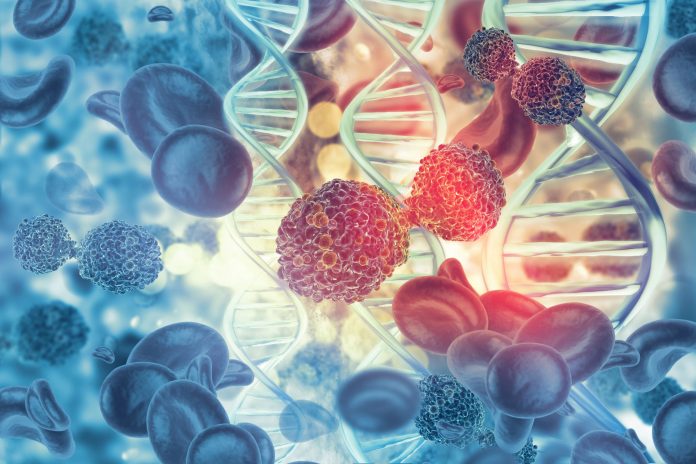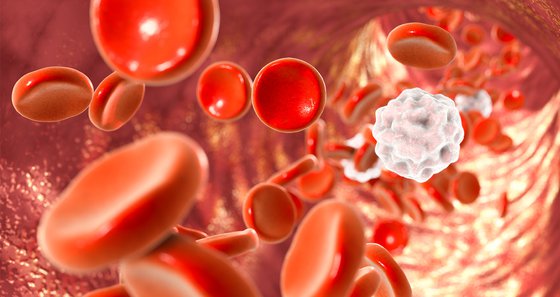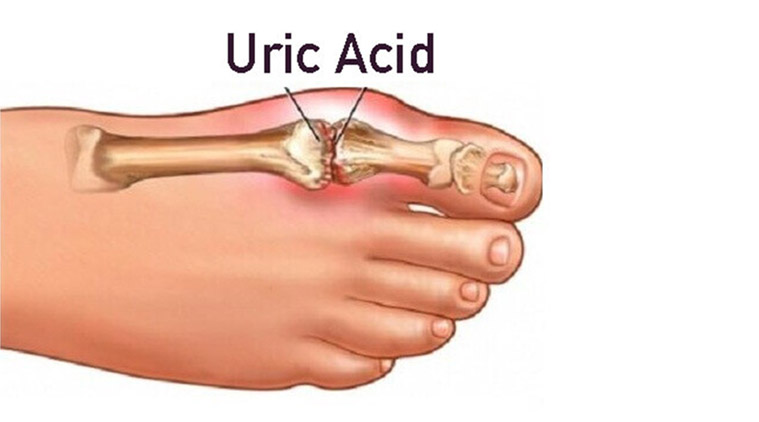Cancer Alert: Are you fond of cake? Do you know how dangerous eating too much cake can be for your health? In this video we will tell you which ingredients present in the cake can cause you serious health problems.
Cancer Alert: The Hidden Dangers of Eating Too Much Cake
Cakes, with their luscious frosting and soft, spongy layers, are a treat that many of us can’t resist. Whether it’s for a celebration, a quick indulgence, or simply satisfying a sweet tooth, cakes are a beloved part of our food culture. However, as delicious as they are, there’s a hidden danger lurking within that could have serious consequences for your health. Recent studies have raised concerns about some ingredients commonly found in cakes, suggesting that excessive consumption could increase the risk of certain health conditions, including cancer. In this comprehensive article, we will explore the ingredients in cakes that pose potential health risks and offer suggestions for healthier alternatives.
The Problem with Processed Sugar: A Silent Killer
One of the primary ingredients in most cakes is processed sugar. While sugar adds sweetness, it’s also one of the most harmful components when consumed in excess. High sugar intake has been linked to a range of health problems, including obesity, diabetes, and heart disease. But how does sugar relate to cancer?
Research suggests that consuming too much sugar can increase the risk of cancer in several ways:
- Obesity and Cancer Risk: High sugar intake can contribute to weight gain, which in turn increases the risk of obesity. Obesity is a well-known risk factor for several types of cancer, including breast, colon, and pancreatic cancer.
- Insulin Resistance: Excessive sugar consumption can lead to insulin resistance, a condition where the body becomes less responsive to insulin, the hormone that regulates blood sugar levels. Insulin resistance is associated with an increased risk of developing certain cancers, such as endometrial and colorectal cancers.
- Inflammation: High sugar diets can promote chronic inflammation in the body. Chronic inflammation is a known factor in the development of cancer, as it can lead to mutations in DNA and promote the growth of cancer cells.
While indulging in a slice of cake once in a while won’t directly cause cancer, consistently consuming sugar-laden cakes can increase your overall risk of developing the disease.
Artificial Additives: The Hidden Chemical Risk
Cakes often contain a variety of artificial additives, such as food colorings, flavorings, and preservatives. While these ingredients help enhance the appearance, flavor, and shelf life of cakes, some of them have been linked to potential health risks, including cancer.
- Food Colorings: Brightly colored cakes are visually appealing, but artificial food dyes such as Red 40, Yellow 5, and Blue 1 have been flagged for potential cancer risks. Studies have suggested that some artificial dyes may be carcinogenic or promote the growth of tumors in animal models. Although the evidence in humans is less clear, it’s a risk many health experts advise against.
- Artificial Flavorings: Synthetic flavoring agents are used to mimic natural flavors in cakes, but these chemicals may pose health risks. Some studies have shown that long-term exposure to certain artificial flavorings can increase the risk of cancer, particularly in the liver and kidneys.
- Preservatives: Preservatives like BHA (butylated hydroxyanisole) and BHT (butylated hydroxytoluene) are commonly used in baked goods to extend shelf life. Both BHA and BHT are considered potential human carcinogens by the International Agency for Research on Cancer (IARC). These chemicals may disrupt hormonal balance and promote the growth of cancer cells.
Trans Fats: A Silent Threat in Every Bite
Another dangerous ingredient commonly found in cakes is trans fat. Trans fats are formed during the hydrogenation process, which is used to solidify oils and extend the shelf life of processed foods. Many cakes, especially store-bought or commercially produced varieties, contain high levels of trans fats.
Trans fats have been linked to an increased risk of heart disease, but their role in cancer development is also concerning:
- Increased Inflammation: Like sugar, trans fats can promote chronic inflammation, which is a risk factor for cancer. Studies have shown that a diet high in trans fats can lead to increased levels of inflammation in the body, potentially promoting cancer cell growth.
- Cellular Damage: Trans fats can damage the structure of cell membranes, leading to oxidative stress and DNA damage. This cellular damage can contribute to the development of cancer, particularly in organs like the colon and prostate.
- Hormonal Disruption: Trans fats can disrupt the balance of hormones in the body, which is a key factor in the development of hormone-related cancers such as breast and prostate cancer.
To avoid these risks, it’s important to limit the intake of trans fats by choosing healthier alternatives when indulging in baked goods.
The Danger of White Flour: A Nutrient-Depleted Ingredient
White flour is a staple ingredient in most cakes, providing structure and texture. However, white flour is highly processed, meaning it’s stripped of most of its natural nutrients, including fiber, vitamins, and minerals. This refined carbohydrate can have serious implications for your health.
- High Glycemic Index: White flour has a high glycemic index, meaning it causes rapid spikes in blood sugar levels. Consistently eating foods with a high glycemic index has been associated with an increased risk of cancers such as breast, colorectal, and prostate cancer.
- Increased Insulin Levels: Like sugar, white flour can cause a rapid increase in insulin levels. High insulin levels can promote the growth of cancer cells and contribute to the development of insulin resistance, which is a risk factor for several types of cancer.
- Nutrient Deficiency: Since white flour is stripped of its natural nutrients, cakes made with this ingredient provide little to no nutritional value. Over time, consuming nutrient-depleted foods can weaken the immune system, making it harder for the body to fight off cancer cells and other diseases.
The Role of Dairy in Cake: A Controversial Ingredient
Many cakes contain dairy products like butter, cream, and milk. While dairy can add richness and flavor, it’s also a controversial ingredient when it comes to cancer risk.
- Hormones in Dairy: Some research suggests that the hormones found in dairy products, particularly estrogen and insulin-like growth factor (IGF-1), may promote the growth of certain cancers, especially breast, prostate, and ovarian cancers. These hormones can stimulate cell proliferation, which increases the risk of cancer development.
- Saturated Fats: Dairy products like butter and cream are high in saturated fats, which have been linked to an increased risk of heart disease and certain cancers, such as colorectal cancer. A diet high in saturated fats can lead to obesity, inflammation, and hormonal imbalances, all of which are risk factors for cancer.
Healthier Cake Alternatives: Indulge Without the Risk
While it’s important to be aware of the potential dangers of cake ingredients, it doesn’t mean you have to give up cake entirely. By making healthier choices, you can enjoy cake without compromising your health. Here are some tips for making cakes healthier:
- Use Whole Grains: Instead of white flour, opt for whole grain flours like whole wheat, almond flour, or oat flour. These alternatives are higher in fiber and nutrients, which can help regulate blood sugar levels and reduce the risk of cancer.
- Natural Sweeteners: Replace processed sugar with natural sweeteners like honey, maple syrup, or coconut sugar. These options are less likely to cause rapid spikes in blood sugar and provide more nutrients than refined sugar.
- Healthy Fats: Instead of using trans fats or butter, consider using healthier fat alternatives like coconut oil, avocado oil, or olive oil. These fats are rich in healthy omega-3 fatty acids, which have anti-inflammatory properties and can reduce the risk of cancer.
- Fresh Ingredients: Choose cakes that are made with fresh, whole ingredients, and avoid those that contain artificial additives, flavorings, or preservatives. Baking from scratch allows you to control the quality of the ingredients and minimize exposure to harmful chemicals.
- Portion Control: Moderation is key. Enjoy cake as an occasional treat, not a daily indulgence. Limiting your consumption can significantly reduce your risk of developing the health issues associated with the ingredients in cake.
- Awareness and Moderation Are Key
While cakes may be a tempting indulgence, it’s essential to be aware of the hidden dangers that can come with overconsumption. The ingredients in cakes, such as processed sugar, artificial additives, trans fats, white flour, and dairy, can pose serious health risks, including an increased risk of cancer. However, by making informed choices and opting for healthier alternatives, you can still enjoy cake without jeopardizing your health.
The key is moderation and awareness. By being mindful of what goes into your food and how often you consume it, you can significantly reduce the potential health risks associated with cake consumption. So the next time you reach for a slice of cake, think twice about the ingredients and consider whether there’s a healthier option available. Your future self—and your health—will thank you.














